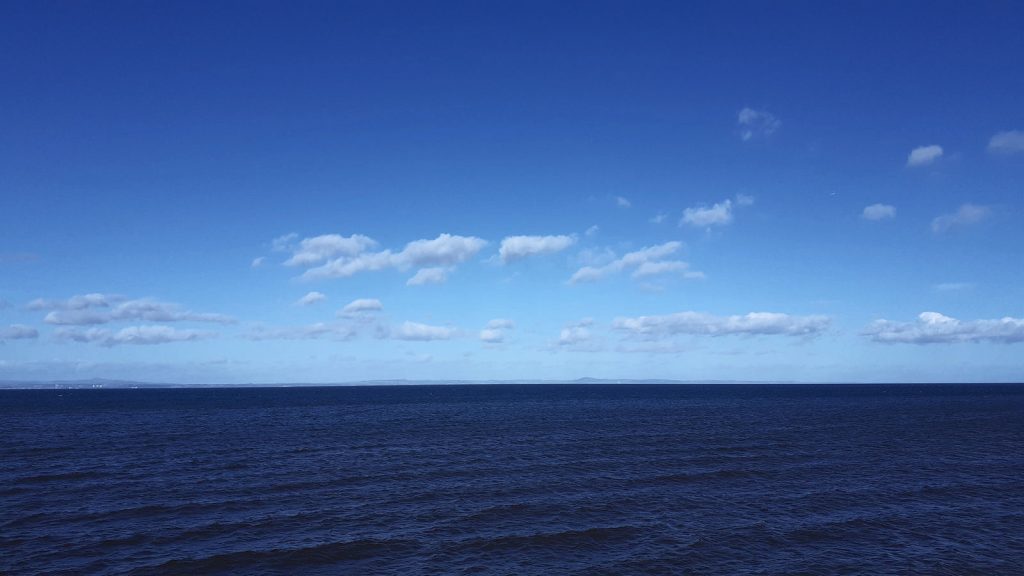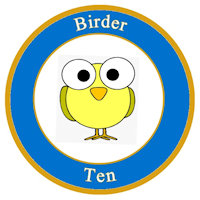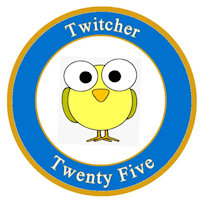Today was challenging, exciting, relaxing and frustrating, all at the same time, if that is indeed actually possible. Yes, it was my first attempt at one of my new unofficial medal ideas, the Birding Medals. Musselburgh in East Lothian was my chosen location, more specifically the disused and reclaimed ash lagoons, located along the sea shore at Levenhall Links, now a popular destination for dog walkers, cyclists, turfers, runners, and of course, birders.
There are three medals in the series, Birder, Twitcher and Ornithologist, with the aim being to identify either 10, 25 or 50 different species of bird respectively, from no more than 10 turf zones. It might sound an easy proposition but it is far from it. I was confident that I could achieve the Birder with 10 birds identified and was reasonably confident I could also manage the Twitcher at 25 bird species. As to the Ornithologist medal with 50 bird species, I did not have the slightest hope of gaining that one. October is the wrong time of year as all the summer migrants have departed for their winter holidays abroad. But you never know what you will find.
My first zone was Eskmouthebeaks which gave me a great start with 11 species, including curlew, oystercatcher, mute swan, carrion crow, cormorant, common gull, herring gull, widgeon, black-headed gull, redshank and eider. Not only had I gained the Birder medal but there was only another 14 now required for that Twitcher medal. If only it was going to be that easy. It wasn’t.
Next stop was zone MusselLagoon, located at the boating pond, where sightings started to get rather slim, only producing mallard and moorhen. A small brown bird dropped from the sky, sat on the fence for a nano-second then vanished into the long grass. I suspected it to be a meadow pipit from its peeping call but wasn’t certain, so no tick on the list. Returning to the sea wall, zone JMWAshLagoons was next, offering up lapwing, goldeneye, magpie and starling. Initially, as I approached the zone a huge flock of lapwing had been put up from the scrape, that’s the ash lagoons where the bird hides are located.
I spoke out loud, please stay in the air until I get in the zone. Of course, they must have heard me and thought let’s all land again. By the time I reached the zone they had all settled down, all swooping back into the ash lagoons completely out of sight. I tried offering money to some passing street urchins on BMX bikes to go and flush them out but didn’t have any cash with me and they would only accept American Express. Luckily, a few popped into the air and I could add lapwing to the list. There was also another large flock wheeling across the sky but they were difficult to identify with the sun behind them. I suspected they were starlings from the way they were wheeling about. I later visited the bird hides and confirmed they were indeed starlings. My count was now at 17. Only another 8 required.
I tried at a few more zones along the sea wall but added nothing new to the list. So, I decided that a visit to Prestongrange Museum might prove fruitful. The benches also offered a good sheltered place for a lunch stop. My next three birds were identified by their call or song. First a small flock of goldfinches passed overhead, their tinkling call is quite distinctive. In the trees a blackbird alarm call revealed its presence and a robin was singing away in the bushes. Three more on the list. A blue tit also made an appearance and was duly noted. My tally was now at 21. With only 4 now required I was getting hopeful that the Twitcher medal would be mine.
There’s another zone at this location, zone SteamCrane. Initially, only another robin was spotted and I set about waiting. And waiting. And waiting some more. Eventually my patience was rewarded with a buzzard soaring overhead. Only 3 more species required. Getting close now. Thought there might at least be a woodpigeon but nothing else appeared. I suspect they were all waiting in the trees, laughing at me, and would appear after I stepped out of the zone.
Next, I crossed back over to the coast, hopeful of spotting something, perhaps a skylark or meadow pipit. However, other than a couple of fleeting glimpses of some unknown LBJ’s (little brown jobs), it looked like I wasn’t going to be lucky. Then, a distant speck was spotted approaching from the east. When it stopped and started hovering, it could only be a kestrel. My trust binoculars confirmed this. Only 2 left to get now.
I visited a few more zones between the lagoons and the race course but nothing doing, so returned back to the coast. Revisiting zone MusselLagoon gave me a grey heron for the list and zone MusselLagWay gave me just what I was looking for, a small flotilla of velvet scoters bobbing about way out in the bay. In addition, I also spotted a single white blob in the distance. It gave me just enough time before it dived to confirm it was a male goldeneye. On the way back I also added greylag goose to the list. There was also a fleeting glimpse of a diver in the bay but too brief to determine the species.
After double checking my list, 26 different species of bird had been identified from 6 zones. The medal was mine. I’m now a Turf Twitcher! Of course, there were lots of other bird species about but not viewed from a turf zone. A visit to the bird hides at the scrapes revealed teal, sanderling, greenshank, Canada goose and shelduck. Just a pity there’s not a zone at the bird hides. Still, an enjoyable day out all the same, combining turfing with birding. However, I now have a real challenge ahead of me if I want that Ornithologist medal. I’ve used up 6 of my 10 zones and still require another 24 species of bird. I think I’ll wait until next year when the summer migrants have returned. Might just be possible then.
On the subject of birding equipment, a good birding telescope would have been beneficial today, useful for identifying birds out in the Firth of Forth and on the scrapes. Actually, I do have a good birding scope, a Leica APO-Televid 77 which I bought about 30 years ago but rarely use, mainly because its heavy to lug about and I never got round to purchasing a decent solid tripod. It’s been hibernating under the bed for years. Probably should get that tripod! In the meantime, my trusty Leica Trinovid 8 x 42 binoculars are still as good as the day I bought them, some 30-years ago. They were expensive back then at £800, and still are today at over £1000, but the old adage of buying the best you can afford really is true. Oh dear, I’ve just spotted some Leica Ultravid 8 x 42 HD-Plus at only £2100. Dear Santa, please can I have…
- Birder 10 – identify 10 different species of bird from no more than 10 zones.
- Twitcher 25 – identify 25 different species of bird from no more than 10 zones.
Copyright ©2022 Gary Buckham. All rights reserved.




